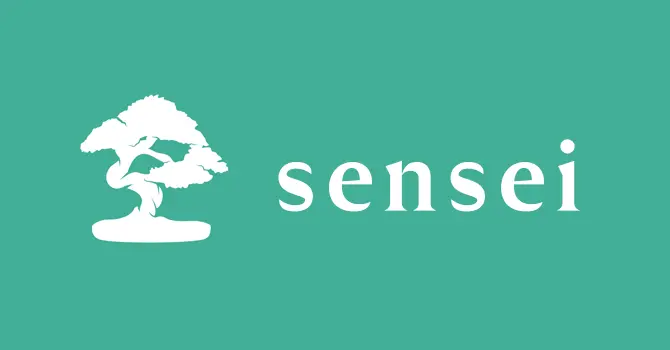
Sensei LMS is a WordPress learning management plugin designed for educators, trainers, and entrepreneurs. It offers deep WordPress integration, WooCommerce monetization, and a user-friendly course builder. The plugin’s benefits include complete ownership of data, multimedia support, and flexible customization. However, its limitations include reliance on paid add-ons, fewer integrations, and a smaller ecosystem compared to competitors.
With modular extensions, Sensei LMS adapts to multiple use cases, from schools and businesses to solo course creators. Its pricing structure allows users to start for free and expand with premium features as needed. Ultimately, Sensei LMS is best suited for those who want a simple yet scalable learning platform directly within WordPress.
WordPress Learning Management Plugin
Sensei LMS is a powerful Learning Management System (LMS) plugin designed specifically for WordPress. Developed by Automattic, the team behind WordPress.com and WooCommerce, it provides a native and seamless way to create, deliver, and manage online courses. Unlike third-party platforms, Sensei LMS allows educators to build courses directly within their WordPress site, giving them full control over content, branding, and user experience.
Who is it for?
Sensei LMS is ideal for educators, coaches, and businesses that want to create and manage courses on their own websites. Teachers can use it to provide structured lessons for students, while trainers can deliver professional development programs. Additionally, entrepreneurs and course creators can integrate Sensei with WooCommerce to monetize their knowledge effectively. Because it’s flexible and customizable, the plugin is suitable for both small independent creators and larger institutions.
Why use it for online learning?
Using Sensei LMS for online learning comes with several advantages. First, it integrates natively with WordPress, making it easy for site owners to manage courses without leaving their familiar dashboard. Moreover, it connects seamlessly with WooCommerce, enabling smooth payment and subscription management. In addition, it supports multimedia content such as videos, quizzes, and interactive lessons, ensuring a more engaging learning experience. Most importantly, it allows complete ownership of your content and data, unlike hosted LMS platforms that limit control.
Key Features of Sensei LMS
When evaluating Sensei LMS, its features stand out as both practical and powerful. To make it easier, here are the most important features, listed in order of priority:
- Seamless WordPress Integration – Since it’s built by Automattic, Sensei works natively with WordPress, ensuring smooth performance and an intuitive setup.
- WooCommerce Compatibility – You can sell courses, manage subscriptions, and create membership packages directly through WooCommerce.
- Course Builder – The drag-and-drop interface helps instructors organize lessons, quizzes, and modules without technical barriers.
- Quizzes and Assessments – Built-in quiz options allow for multiple question types, enabling effective student evaluation.
- Certificates – Learners can receive certificates of completion, boosting motivation and course credibility.
- Content Drip – Instructors can schedule lessons, releasing content gradually to improve retention and engagement.
- Multimedia Support – Courses can include video, audio, images, and text, ensuring diverse content delivery.
- Analytics and Reporting – Educators can track student progress and identify areas where learners need more support.
- Extensibility – Developers can extend Sensei LMS with add-ons and customizations to meet specific requirements.
Benefits of Using Sensei LMS
Sensei LMS brings a wide range of advantages for educators, trainers, and entrepreneurs. Because it is built by Automattic, it ensures reliability and seamless compatibility with WordPress. In addition, it empowers course creators with powerful tools while keeping the setup process straightforward. Here are the most important benefits:
- Deep WordPress Integration – Sensei LMS is designed for WordPress users, allowing easy management of courses within the familiar dashboard.
- WooCommerce Monetization – With WooCommerce support, you can sell courses, create subscriptions, and bundle lessons with other digital products.
- Complete Ownership – Unlike hosted LMS platforms, you retain full control over your content, branding, and student data.
- User-Friendly Course Builder – The drag-and-drop course builder makes it simple to structure lessons, modules, and quizzes.
- Engaging Learning Tools – Features like quizzes, content drip, and certificates enhance the learning experience.
- Flexible Customization – Developers can extend functionality through add-ons, while non-technical users can adjust designs with ease.
- Multimedia Compatibility – You can enrich courses with videos, images, and interactive content, making lessons more engaging.
- Scalability – Sensei LMS works well for both small creators and large institutions, adapting as your learning platform grows.
Limitations of Sensei LMS
While Sensei LMS is a strong solution, it does come with some drawbacks. These limitations may influence whether it’s the right fit for your online learning goals. Therefore, it’s important to understand the key challenges before committing:
- Limited Built-In Features – Many advanced functions, such as content dripping or certificates, require paid extensions.
- Fewer Third-Party Integrations – Compared to competitors like LearnDash or Tutor LMS, Sensei offers fewer integration options.
- Basic Design Options – Styling and customization often depend on your WordPress theme or additional plugins.
- WooCommerce Dependency for Monetization – Selling courses requires WooCommerce, which can add extra setup complexity.
- Less Active Ecosystem – Although reliable, Sensei has a smaller community and fewer add-ons compared to leading LMS plugins.
- Learning Curve for Beginners – New WordPress users may find it slightly challenging to configure at first.
Sensei LMS vs Competitors
When comparing Sensei LMS with other WordPress learning management plugins such as LearnDash, Tutor LMS, or LifterLMS, several distinctions stand out. Because Sensei is developed by Automattic, it integrates more naturally with WordPress than most alternatives. Moreover, its connection with WooCommerce makes course monetization straightforward, while competitors often require third-party tools or complex setups.
- Integration with WordPress – Sensei LMS offers the smoothest WordPress-native experience, unlike competitors that may feel like external add-ons.
- WooCommerce Synergy – Monetization is seamless with WooCommerce, whereas other LMS plugins usually need extra extensions or payment gateways.
- Ease of Use – The course builder is intuitive, although LearnDash and Tutor LMS provide more pre-designed templates.
- Feature Availability – Many advanced tools in Sensei, such as certificates or content drip, require paid add-ons, while LifterLMS or Tutor LMS often bundle them in their core or premium plans.
- Community and Ecosystem – LearnDash and Tutor LMS benefit from larger communities, offering more third-party integrations, while Sensei’s ecosystem is smaller but stable.
- Pricing Model – Sensei’s free version covers basic course creation, yet scaling often requires multiple extensions, which can raise costs compared to bundled competitor plans.
In short, Sensei LMS excels in simplicity and native integration, but competitors may appeal more to users seeking broader ecosystems and advanced built-in features.
Use Cases of WordPress Learning Management Plugin
Sensei LMS is versatile and can be applied in different learning environments. Because it is scalable, it works for both small projects and larger educational platforms. To illustrate its potential, here are the most relevant use cases:
- Educational Institutions – Schools and universities can use Sensei to deliver structured online courses, manage student progress, and issue completion certificates.
- Professional Training – Companies can create employee onboarding programs, compliance training, or professional development courses with interactive lessons and assessments.
- Entrepreneurs and Course Creators – Independent educators can sell online courses directly through WooCommerce, controlling both pricing and branding.
- Membership Sites – Content creators can combine Sensei with membership plugins to provide exclusive access to courses as part of a subscription model.
- Nonprofits and Community Programs – Organizations can deliver free or low-cost training programs to volunteers, community groups, or beneficiaries.
- Blended Learning Models – Educators can supplement in-person teaching with digital lessons, quizzes, and resources for a hybrid learning experience.
Getting Started with WordPress Learning Management Plugin

Starting with Sensei LMS is simple, especially for WordPress users. Since it is available as a free WordPress learning management plugin, the setup process only requires installing it from the WordPress plugin directory. Once activated, the course builder becomes accessible directly from your dashboard. From there, you can create courses, add lessons, and design quizzes without needing advanced technical skills.
To make the process more effective, it’s important to structure your content before building. First, outline your course modules. Next, break them into lessons and then include interactive elements such as quizzes or assignments. Furthermore, because Sensei LMS works seamlessly with WooCommerce, you can enable course monetization early on if you plan to sell access. Finally, don’t forget to test the course experience as a student, ensuring navigation and engagement flow smoothly.
Extensions & Add-ons for Sensei LMS
While the core plugin provides essential tools, Sensei LMS becomes far more powerful with its extensions and add-ons. These additions allow you to expand functionality, improve engagement, and create more professional learning experiences. To prioritize what matters most, here are the key add-ons listed in order of importance:
- WooCommerce Paid Courses – The most critical extension, it allows you to sell courses, manage subscriptions, and offer bundles.
- Certificates – This add-on lets students receive branded certificates upon completion, boosting credibility and motivation.
- Content Drip – Instructors can schedule lessons to release gradually, helping learners absorb material at a steady pace.
- Course Progress – Displays learners’ progress visually, improving clarity and engagement throughout the course.
- Interactive Blocks – Adds tools such as flashcards, image hotspots, and task lists to make lessons more engaging.
- Media Attachments – Enables instructors to attach additional resources such as PDFs, audio files, or slides to lessons.
- Question Bank – Provides a centralized library of questions that can be reused across multiple quizzes, saving time.
- Student Management Tools – Helps administrators monitor enrollments, track learner activity, and manage grades effectively.
- Email Notifications – Sends automated updates to learners about progress, completions, or course announcements.
With these extensions, Sensei LMS evolves from a simple course builder into a full-featured online learning platform tailored to different educational needs.
Pricing & Plans of Sensei LMS
Sensei LMS follows a flexible pricing model, making it accessible for both beginners and advanced users. The core plugin is free, allowing you to build and manage courses without upfront costs. However, to unlock its full potential, premium extensions are often required.
Here are the key pricing options sorted by importance:
- WooCommerce Paid Courses ($179/year) – Essential for selling courses, managing subscriptions, and creating bundles.
- Certificates ($49/year) – Provides students with official completion certificates, a must-have for credibility.
- Content Drip ($29/year) – Allows lessons to be released on a schedule, keeping learners engaged over time.
- Course Progress ($29/year) – Displays learners’ advancement visually, improving motivation.
- Interactive Blocks ($39/year) – Adds interactive tools like flashcards and hotspots to boost engagement.
- Question Bank ($29/year) – Helps instructors manage reusable questions for quizzes.
- Email Notifications ($29/year) – Sends automated updates and reminders to learners.
While these add-ons may increase overall costs, they provide flexibility, allowing you to pay only for the features you truly need. Compared to competitors with bundled premium plans, Sensei LMS offers a modular approach that can be more cost-efficient depending on your goals.
Conclusion
Sensei LMS stands out as a reliable, WordPress learning management plugin solution for creating and managing online courses. Because it is developed by Automattic, its stability and seamless integration with WordPress are unmatched. Moreover, its WooCommerce synergy makes monetization straightforward, while its extensions allow deep customization.
Although it may require add-ons for advanced functionality, Sensei LMS remains an excellent choice for educators, businesses, and entrepreneurs who value ownership of content and a scalable platform. By combining flexibility, simplicity, and extensibility, it bridges the gap between basic course creation and full-fledged online learning solutions.


